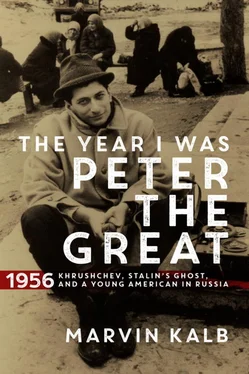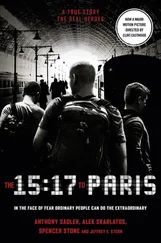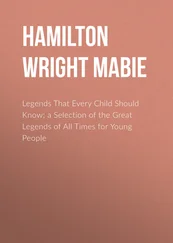The view was spectacular, even on a cloudy day. I could see the Kura River twisting through the city, stone bridges arcing from one riverbank to the other. The old part of Tbilisi, carved into the mountainside, came into stunning relief, the newer part much less so. From this altitude the cars looked like beetles and the people like ants. “This is truly a pretty city,” I said, turning to my guide. “Yes, it is,” he replied. “It is also a city of legends.”
“Legends?” I said. “Tell me one.”
“What the old women say, including my grandma, is that many years ago, in the fifth century, the king of Mtskheta was hunting in this area. One day he spotted a stag and fired an arrow into his chest. Blood spurted from the wound. The stag rubbed up against a tree, got the arrow out of his chest, and then leaped into one of the warm springs around here. A few minutes later, the stag jumped out of the water and raced into the woods. There was no sign of blood, no wound, nothing. The king was amazed and decided to move his capital to Tbilisi, the city of miraculous warm springs.” He then added, “The Russians, when they came here, could not pronounce Tbilisi very well. They changed the name to Tiflis, but now it is once again Tbilisi.”
We walked over to a mound of heavy rocks. Water trickled out of them. “Another legend,” the guide continued, “is that deep in the night blind people come here, and let the water from these rocks drip, drop by drop, into their eyes, and then they can see again.” He must have seen a look of skepticism on my face. “It is the legend,” he assured me. “The Georgian people are a simple people who believe in legends and superstitions. Not so much in the city, but in the countryside.”
On the way down, as promised, we stopped at the white church. Up close it was not as beautiful as it appeared from afar. Built in the twelfth century, the church hid a small graveyard. Side by side were two tombstones, romantically linked—one to the poet Griboyedov, the other to his young bride. Griboyedov, serving as Russian ambassador to the Persian court in Teheran, was killed by an anti-Russian mob, and his bride arranged for his body to be returned and buried in Tbilisi, the city he loved. On top of his coffin was the figure of a young woman leaning against a cross, tears in her eyes. Beneath her was an inscription in which the unhappy bride asks an unanswerable question: “Your works and deeds are immortal in the memory of Russia. Then why has my love outlived you?”
Buried nearby was Stalin’s mother. Her gravestone was simple, made of black marble. A small crowd had gathered around it, a tribute as much to her son as to her. Apparently this was a common sight.
* * *
With the clock ticking down on my stay in Tbilisi, I wanted to visit one more place, Tbilisi State University, where the pro-Stalin rebellion had originated the previous March. I took a cab to the handsome, tree-lined campus. Classes were just then beginning for a new academic year. Girls entered the large courtyard, walking arm-in-arm with other girls, pretending to ignore the glances of the young men standing to one side and whispering to one another. I heard only Georgian with an occasional Russian expression thrown into a conversation. Everything seemed perfectly normal, a campus like any other, yet the previous March it had sparked a bloody rebellion against Soviet authority. Anti-Soviet resentment lingered among many of the students, I was told, but they appeared to be corralled behind a common need to be practical and get on with their lives.
My experience on Soviet campuses was that, like the Pied Piper in the Robert Browning poem, I would be quickly surrounded by a crowd of students and pummeled with questions. I walked around the campus for a few minutes, to see and be seen, and then I sat down on a bench and waited for the inevitable to happen. Five, ten minutes passed; fifteen, twenty minutes passed, and nothing happened. I noticed groups of young men gathering nearby, looking at me, but no one approached me.
Finally, one young man, apparently betting I was not a Georgian, called out a question to me in his native language. I shrugged my shoulders. I did not understand him. The young man then shouted something to his friends that must have been the equivalent of “I told you so,” and a crowd quickly began forming around me, dozens of young men firing questions at me about Stalin and Marx, baseball and football, housing and clothing, Eisenhower and Stevenson. This extraordinary Q and A ended five hours later, and it ended then only because I had to catch a train to Sochi, my next stop. Otherwise, it could have continued through dinnertime.
Later, on the train, I reflected on the differences between Russian and Georgian students. First, the Georgians were so nationalistic they took offense at any criticism of their country. They defended Georgia as if it were heaven on earth, though they knew better. Most Russians, on the other hand, invited criticism of their country and its communist system. If they thought your criticism did not go far enough, they would rush to fill in the blanks. Second, for Georgians criticism of Stalin was unacceptable. He was sacred, untouchable, a god. For Russians Stalin was suddenly a juicy target for all forms of criticism. He was evil incarnate, a political and ideological curse to be expunged from Soviet society. Finally, Georgian students seemed cocky, self-confident, unafraid, much more so than Russian students. The Georgians conveyed the impression that they controlled their own destiny. Russian students seemed to know better.
One subject—the “Negro question,” as it was often framed at the time—was on the top of their minds that day. Pravda had run a disturbing story about riots in Clinton, Tennessee. These Georgian students were convinced that America was a racist country. Their questions were sharp, their attitude confrontational. In my responses, I tried to be honest. I acknowledged the problem and provided some historical context. I told them about the 1954 Supreme Court decision desegregating public schools, which they knew nothing about. I told them about Lincoln, the Civil War, carpetbaggers, and Truman’s integration of the armed forces. Again they knew little about this history.
My candor seemed to disarm them. When our conversation shifted to their next big question—fingerprinting in the United States—their questions were less pointed.
“Why did the United States insist on fingerprinting Soviet exchange artists and students?” they asked.
“It’s the law,” I said. Just as Soviet law prescribed internal passports, American law insisted on fingerprinting foreign visitors. “That is the law,” I repeated, adding, “If a Russian really wanted to visit the United States to understand us better, he would not permit the fingerprinting issue to stand in his way.” I described Khrushchev’s blistering criticism of the American practice of fingerprinting Soviet visitors, which I had heard at the Queen’s birthday party at the British embassy a few months earlier. I thought they would like to hear that the Soviet leader agreed with them.
“Don’t mention that man’s name in this country,” a student snapped. Khrushchev, by attacking Stalin and his legacy, had become persona non grata in Georgia.
No matter what the subject, whether it be “the Negro question” or American fingerprinting, we always somehow returned to Stalin. “Tell me,” asked another student, standing in the rear of the crowd, “what do Americans really think of Stalin?”
I told him the truth. “Americans don’t think much of Stalin,” I replied, “and when they do, they disagree with his policy.”
“But certainly you consider him a great and noble person?”
Читать дальше












